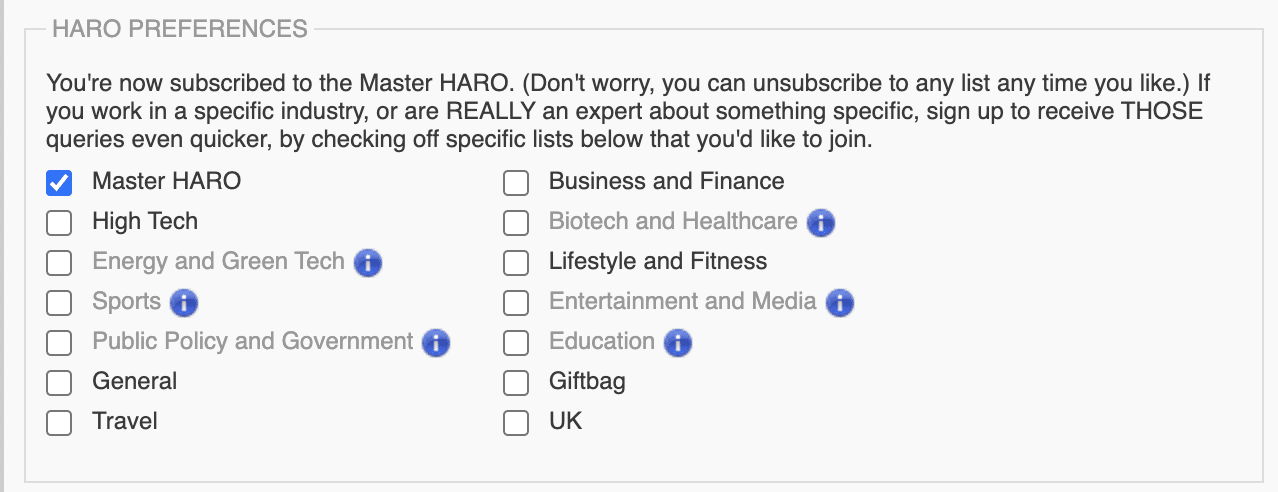Link building is one of the most important and challenging aspects of SEO. It refers to the process of acquiring links from other websites that point to your own site. Links are like votes of confidence that tell search engines and users that your site is trustworthy, authoritative, and relevant.
However, not all links are created equal. Some links can boost your SEO ranking, while others can harm it. That’s why you need to follow the white hat link building principles when you build links for your site.
White hat link building is the practice of getting links from other sites in an ethical and natural way, without violating any of Google’s guidelines or manipulating the search results. White hat links are earned by creating and promoting valuable and relevant content that attracts and satisfies your target audience.
White hat link building has many benefits for your site, such as:
- Improving your domain authority and trustworthiness.
- Increasing your organic traffic and conversions.
- Building relationships and reputation in your niche.
- Enhancing your brand awareness and visibility.
However, white hat link building is not easy. It requires time, effort, creativity, and patience. It also requires a solid strategy and a clear understanding of your goals and audience.
That’s why in this guide, we will share with you some of the best white hat link building strategies that you can use to grow your site’s SEO ranking and authority. These strategies are proven, effective, and safe to use. They will help you get white hat backlinks from high-quality and relevant sites in your niche.
But before we dive into the strategies, let’s first define what is white hat link building and how it differs from other types of link building.
What is White Hat Link Building?
White hat link building is “the practice of creating compelling content on your website so that other sites will naturally want to link to it” . In other words, white hat link building is about earning links rather than buying or exchanging them.
White hat link building follows Google Search Essentials, which state that you should:
- Make pages primarily for users, not for search engines.
- Don’t deceive your users or present different content to search engines than you display to users.
- Avoid tricks intended to improve search engine rankings. A good rule of thumb is whether you’d feel comfortable explaining what you’ve done to a website that competes with you.
- Avoid participating in link schemes designed to increase your site’s ranking or PageRank. In particular, avoid links to web spammers or “bad neighborhoods” on the web, as your own ranking may be affected adversely by those links.
- Don’t use unauthorized computer programs to submit pages, check rankings, etc. Such programs consume computing resources and violate their Terms of Service.
White hat link building is based on the principle of providing value to both the users and the linking sites. It focuses on creating high-quality content that solves problems, answers questions, educates, entertains, or inspires your audience. It also involves promoting your content to relevant and authoritative sites that can benefit from linking to it.
White hat link building is not a quick or easy process. It takes time to research, create, optimize, and distribute your content. It also takes time to build relationships with other site owners and influencers in your niche. However, white hat link building is worth the effort because it can bring long-term and sustainable results for your site.
How White Hat Link Building Differs from Other Types of Link Building?
Not all link building strategies are white hat. Some are considered gray hat or black hat, depending on how they comply with Google’s guidelines and how they affect the quality of the web.
Gray Hat Link Building
Gray hat link building is a term used to describe link building tactics that are not explicitly forbidden by Google but are not recommended either. They are risky and may result in penalties if detected by Google. Some examples of gray hat link building are:
- Article marketing: Writing articles with keyword-rich anchor texts and submitting them to article directories or blogs that accept guest posts without editorial review.
- Private blog networks (PBNs): Creating a network of websites that are owned or controlled by you and linking them to your main site.
- Paid links (link insertions): Buying or selling links that pass PageRank or influence rankings.
- Link exchanges: Trading links with other sites for mutual benefit.
Black Hat Link Building
Black hat link building is a term used to describe link building tactics that violate Google’s guidelines and are intended to manipulate the search results. They are unethical and may result in severe penalties or de-indexing by Google. Some examples of black hat link building are:
- Spamming: Posting irrelevant or low-quality comments or messages on forums, blogs, social media, or other platforms with links to your site.
- Hacking: Injecting links to your site on other websites without their permission or knowledge.
- Cloaking: Showing different content to users and search engines, such as redirecting users to a different page or hiding links in invisible text or images.
- Scraping: Copying content from other websites and using it on your own site without attribution or permission.
As you can see, white hat link building is the only type of link building that is safe, ethical, and beneficial for both your site and the web. Therefore, you should avoid using any black hat link building tactics and stick to the white hat ones. Gray hat tactics can be beneficial in the long run, but you need to be extra careful when utilizing them.
Now that you know what is white hat link building and how it differs from other types of link building, let’s look at some of the best white hat link building strategies that you can use for your site.
White Hat Link Building Strategies
Here are some of the most effective and popular white hat link building strategies that you can use to get high-quality backlinks for your site:
Guest Posting

Guest posting is one of the oldest and most widely used white hat link building strategies. It involves writing and publishing articles on other websites that are relevant and authoritative in your niche. In exchange, you get a link back to your site in your author bio or within the article.
Guest posting has many benefits for your site, such as:
- Exposing your content and brand to a new and larger audience.
- Establishing your credibility and expertise in your niche.
- Building relationships and trust with other site owners and influencers.
- Driving targeted and qualified traffic to your site.
However, guest posting also has some challenges, such as:
- Finding suitable and reputable sites to pitch for guest posting opportunities. Here are a couple of tips how to master your guest post outreach game.
- Writing high-quality and original articles that meet the guidelines and expectations of the host sites.
- Following up and tracking the results of your guest posts.
Best Practices for Guest Posting
To overcome these challenges, you need to follow some best practices for guest posting, such as:
- Researching your niche and identifying the top sites that accept guest posts and have a similar or complementary audience to yours.
- Creating a list of potential topics that are relevant, interesting, and valuable for both your site and the host site.
- Crafting a personalized and compelling pitch that showcases your expertise, your proposed topic, and the benefits of publishing your guest post.
- Writing a high-quality and original article that provides value to the readers and the host site. Include relevant keywords, images, data, examples, and links to credible sources. Avoid self-promotion or spammy links in your article.
Guest posting is a powerful white hat link building strategy that can help you get high-quality backlinks from authoritative sites in your niche. However, it requires a lot of time and effort to do it right. Therefore, you need to be strategic and selective about where and how you guest post.
Here is a comprehensive guide we wrote on how to do guest posts in Saas – the right way!
Content Marketing

Content marketing is another popular white hat link building strategy. It involves creating and distributing valuable and relevant content that attracts and retains your target audience. Content marketing can include various types of content, such as blog posts, videos, podcasts, infographics, ebooks, webinars, case studies, etc.
Content marketing has many benefits for your site, such as:
- Educating and informing your audience about your niche, products, or services.
- Establishing your authority and thought leadership in your niche.
- Generating leads and conversions for your site.
- Increasing your social media presence and engagement.
- Increasing the number of keywords you rank for on search engines.
However, content marketing also has some challenges, such as:
- Creating high-quality and original content that stands out from the crowd and meets the needs and expectations of your audience.
- Optimizing your content for search engines and users correctly.
- Distributing and promoting your content to reach and attract your target audience.
Best Practices for Content Marketing
To overcome these challenges, you need to follow some best practices for content marketing, such as:
- Researching your niche and identifying the gaps, problems, questions, or interests of your audience.
- Creating a content marketing strategy and a content calendar that outline your goals, topics, formats, channels, and metrics for your content.
- Creating high-quality and original content that provides value to your audience. Use data, facts, examples, stories, visuals, or other elements to make your content engaging and credible. Avoid duplicate or thin content that offers no value or harms your SEO ranking.
- Optimizing your content for search engines and users. Use relevant keywords in your titles, headings, URLs, meta descriptions, images, etc. Use tools like Yoast SEO and Ahrefs to help you with SEO optimization. Use tools like Grammarly to help you with writing quality and readability.
Stick to creating content that tackles the target user intent and you’ll be ranking on the first page in less than a year, for sure!
HARO Link Building

HARO (Help A Reporter Out) is a white hat link building strategy that involves finding and responding to media queries that match your expertise and niche. HARO is a platform that connects journalists and bloggers with sources who can provide them with information, quotes, or stories for their articles.
HARO has many benefits for your site, such as:
- Getting exposure and recognition from reputable media outlets and publications.
- Establishing your authority and credibility in your niche.
- Earning backlinks from high-quality and relevant sites.
However, HARO also has some challenges, such as:
- Finding and filtering relevant media queries that match your expertise and niche.
- Crafting and pitching compelling and credible responses that get published by journalists and bloggers.
- Following up and tracking the results of your HARO responses.
How to Use HARO to Improve Your SEO
Sign up for HARO as a source and choose the categories that are relevant to your niche. You will receive three emails per day (Monday-Friday) with media queries from different categories:

Once you get an email, scan through the media queries and select the ones that match your expertise and niche.
Write a high-quality and original response that provides value to the journalist or blogger. Include your name, title, website, and a short bio. Use data, facts, examples, stories, or quotes to support your response. Avoid self-promotion or spammy links in your response.
Sending your response as soon as possible as each media query will have a deadline. Use tools like Mailtrack to track whether your response has been opened or replied.
If your response is published, congratulations! Follow up and thank the journalist or blogger who publishes your response. You can also ask them to include a link to your site if they haven’t already done so.
While HARO might be tough at first, it can be a true gold mine for link building, if you give it enough patience.
Podcast Outreach

Podcast outreach is a white hat link building strategy that involves finding and pitching relevant and popular podcasts to feature you as a guest or a sponsor. Podcasts are audio shows that are distributed online and can cover various topics, such as business, education, entertainment, health, etc.
Podcast outreach has many benefits for your site, such as:
- Reaching and engaging a new and loyal audience that listens to podcasts.
- Establishing your authority and personality in your niche.
- Driving qualified and organic traffic to your site.
However, podcast outreach also has some challenges, such as:
- Finding relevant and popular podcasts that match your expertise and niche.
- Crafting and pitching compelling and credible proposals that get accepted by podcast hosts.
- Preparing and delivering valuable and interesting podcast interviews that drive listeners to your site.
How to Do Podcast Outreach
Here are a couple of steps on how to perform this white hat link building strategy properly:
- Research your niche and identify the top podcasts that are relevant and popular in your niche. You can use tools like Listen Notes, Podchaser, or Chartable to find and filter podcasts by category, rating, reviews, etc.
- Create a list of potential topics or stories that are relevant, interesting, and valuable for both your site and the podcast. You can also use tools like BuzzSumo, Answer The Public, or Quora to find trending or popular topics or questions in your niche.
- Craft a personalized and compelling proposal that showcases your expertise, your proposed topic or story, and the benefits of featuring you on the podcast. You can also include some samples of your previous podcast appearances or other content that demonstrate your value and credibility.
- Find the contact information of the podcast hosts or producers. You can use tools like Hunter.io to find their email addresses. You can also use social media, contact forms, or comments to contact them.
- Send your proposal as soon as possible before the podcast schedule is full. Use tools like Hunter.io to send and track your emails.
- Prepare and deliver a high-quality and original podcast interview that provides value to the listeners and the podcast. Talk about relevant topics, data, examples, stories, or quotes to support your interview. Include a clear call to action for the listeners to visit your site or sign up for your offer.
- Promote your podcast appearance on your own channels, such as social media, email newsletter, or blog. Encourage your audience to listen, share, and comment on your podcast appearance. This will help increase the exposure and engagement of your podcast appearance.
White Hat Link Building Takes a While – But It’s Totally Worth It!
White hat link building is the practice of getting links from other sites in an ethical and natural way, without violating any of Google’s guidelines or manipulating the search results. White hat link building has many benefits for your site, such as improving your domain authority, increasing your organic traffic, and building trust and credibility.
However, white hat link building is not easy. It requires time, effort, creativity, and patience. It also requires a solid strategy and a clear understanding of your goals and audience.
The strategies we shared are proven, effective, and safe to use. They will help you get high-quality backlinks from authoritative sites in your niche.
While they might take a bunch of time to execute properly – they are worth it in the long run!

